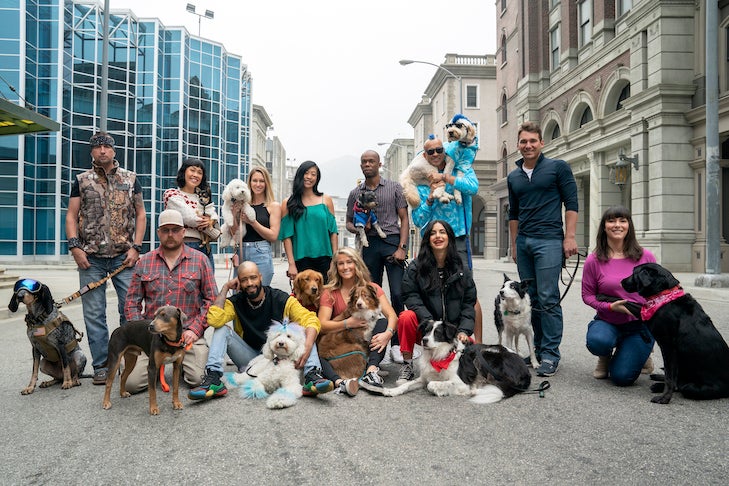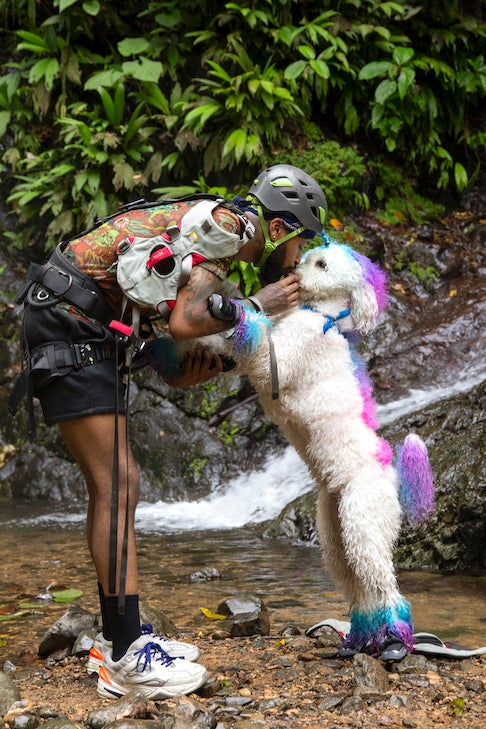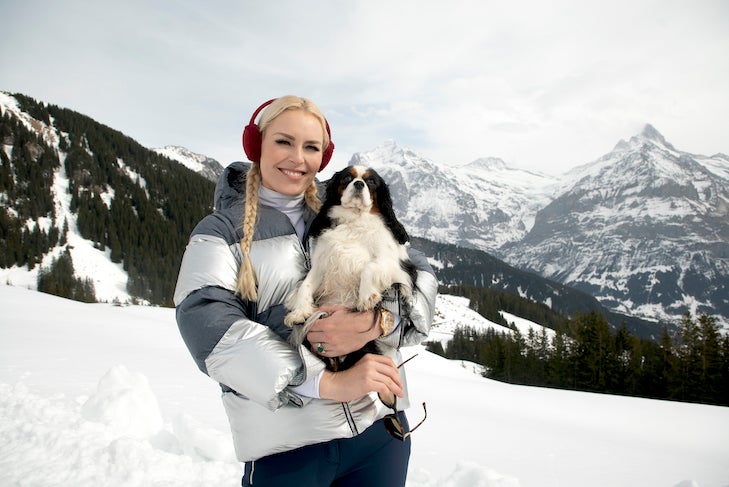
Are you and your dog watching Amazon Prime’s new original reality series The Pack? Every dog person I know has been buzzing about this show and how great the training was incorporated. As part of the show, 12 teams from across the United States traveled to various countries around the world, competing against one another in dog-oriented challenges.
From episode one it was made clear to viewers that a dog-safety team of trainers determined the different challenges the dog/handler teams would face, working with the dogs ahead of time and monitoring the dogs at all times to ensure safety. I had the opportunity to connect with The Pack‘s expert dog trainer Nick Benger to get a behind-the-scenes look at what training the dogs (and their owners) looked like for the show.
Casting ‘The Pack’
The 12 dogs who started the show ranged in size from small to large and were both purebred and mixed-breed. The show’s dog trainers worked alongside the casting department in making the decisions about which pups would be part of the show. “It was important to the spirit of the show that these were pet dogs, but we were especially looking for fit, active dogs that had a very strong relationship with their partners,” Benger explains. “Thankfully, through careful casting, we had the advantage of having dogs with great temperaments.”
That, along with the desensitization work the trainers did during the orientation period, helped all the dogs be prepared for the various locations the competitors would be traveling to, including busy urban environments like Mexico City and Paris. Although all the dogs involved in The Pack were regular household pets and not professionally trained actors, they did receive some specific training ahead of filming.
“In preparation for the show, the contestants initially attended weekly webinars with Nicole Ellis and me,” Benger says. “This is in addition to the online lessons and equipment we sent them to begin preparing their dogs for the show, which gave them a solid foundation so that we could get the majority of the training done during a two-week in-person orientation in Los Angeles.”

Training the Dogs on ‘The Pack’
As part of the show, dogs and their people would compete in challenges—everything from ziplining in Costa Rica to finding buried avalanche “victims” in Switzerland—as well as things like pulling ropes to solve puzzles and other trick-based skills. I was very curious about how much training the dogs (and their handlers) got for these particular skills ahead of time during the pre-recording training period.
“It’s important not to let contestants know what challenges they’ll face on the road,” Benger says. “This meant that a lot of the training had to be skill-based. We taught the dogs to be able to tug, retrieve, pull, press buttons, push balls, and much more. It wouldn’t work if the dogs only knew how to retrieve one item or pull on one type of toy—they had to learn to use these skills in all kinds of scenarios.”
I was also impressed with how the safety and comfort of the dogs was highlighted during every challenge. This included safety checks to ensure that the pups were properly secured in seatbelts before getting into vehicles, as well as having them wear protective foot and eyewear during more rugged challenges. It was very clear that the safety of dogs was the most important thing. In addition, for some of the more physically demanding challenges—like crossing a suspension bridge or ziplining—alternative options existed for competitors if their dogs were displaying any fear or symptoms of stress. Benger explains that, when prepping the dog owners to compete, “we spoke a lot about reading when your dog is unsure or nervous.”
Keeping training fun for dogs is always key and was a top priority on the show. “When you train your dog to enjoy wearing boots, Rex Specs, or a new harness, you need to be able to identify when they’re not comfortable so you can keep the training fun and develop the positive association you’re after,” Benger says. “There are always dog-safety team members at challenges ready to step in if necessary, too. It’s extremely important to us that the dogs enjoy their time on the show.”

Unexpected Training Challenges
The dogs competing on the show—who, again, are not seasoned canine actors—had to also get used to the realities of being filmed for television, including being around film crews and their equipment. “We had time slots where crew were invited to be around the dogs to acclimatize them to large groups of people, although physical contact between the crew and dogs was always minimized to prevent the dogs becoming distracted,” Benger says. “Of course, the dogs didn’t always read that memo. Trying to tell a Golden Retriever not to lick the cameraman in the middle of an interview is another matter!”
It was impressive how well the dogs did during the show, especially some of the more physical challenges like ziplining and the technically challenging exercises like scent work, where dogs were searching for Birch essential oil. But as we all know, there are always surprises that come up when training dogs, so I had to ask Benger if there were any unexpected challenges that came up with the dogs while filming.
“We spent so many months trying to prepare for anything and everything that I have to think hard about this,” he says. “I think one thing we didn’t consider is the increased difficulty of buried scent items in scent work. I would have liked to spend more time practicing that, although much of the practice would be time spent with the humans on reading their dogs’ body language when they detect buried scent as opposed to scent items above ground. That’s me viewing scent work as a dog-training geek, though. Overall, I think it’s clear the dogs did great on the show.”

Play Along at Home
What I loved most about the show was that the majority of the skills used in the challenges are things that most healthy and active dogs could learn. “The beauty of the show is these aren’t fifth-generation, Dutch working line military dogs,” Benger says. “They’re pet dogs, from pet homes. That means that you can teach your dog to do anything you see on the show. I know because we did it. This show is further proof of what can be achieved with kind, positive training methods and I hope it inspires you to get out there and do something fun with your dog.”
One of the most popular challenges on the show was soccer in Mexico City, which Benger says you can teach your dog “with some time and patience.” To teach your dog to play soccer, all you need is a ball, some treats, and a makeshift goal. You can use wastepaper cans, cones, or anything else you have around your house to create a large goal for your dog to push the ball towards.
Benger offers these step-by-step instructions for teaching your dog to become a soccer star:
- Start by placing a treat under the soccer ball. Your dog will naturally push the ball to get the treat.
- Now pretend to place the treat. Your dog will push the ball and you can throw them a party and reward them from your hand.
- Repeat this process and add a word like “Push” and you’ll have the next Messi (or Jax) on your hands in no time.
Benger also encourages dog owners who enjoyed the show to do more research into dog sports like scent work and try them out with their own pups. There are classes available in most communities and many instructors are even offering online support during the pandemic, so you and your dog can start training at home right away.

